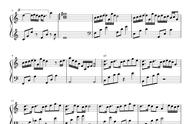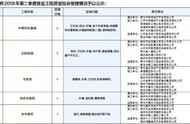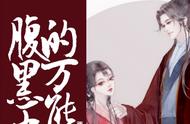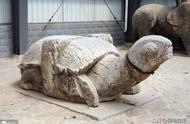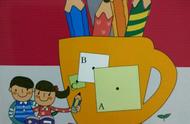尼加拉瓜2002年5分硬币(收于2021年)尼加拉瓜,全称尼加拉瓜共和国;国名释义源于印第安酋长尼加鲁的姓氏;别称为"湖泊和火山之国";位于中美洲中部的总统共和制国家。国土面积:130,375平方公里;人口:615万(2016年);首都:马那瓜;总统:丹尼尔·奥尔特加·萨韦德拉。
尼加拉瓜原为印第安人居住地。1502年哥伦布航行抵此。1524年沦为西班牙殖民地。1821年9月15日宣告独立。1823年加入中美洲联邦。1839年建立共和国。
尼加拉瓜奉行不结盟的外交政策,愿在主权、自决和互相尊重的原则下与所有的国家建立和发展关系。主张加强南南合作,改善南北经济关系;不结盟运动应该顺应国际上出现的新的政治和经济潮流;支持联合国改革。1985年12月7日,尼加拉瓜与中国建交。1990年11月6日,尼宣布与台湾"复交",11月9日,中国政府宣布中止与尼的外交关系。
尼加拉瓜是典型的农牧业国家。森林占全国面积的43%。严重依赖外援。高额外债和贸易赤字仍然是尼加拉瓜经济发展的主要障碍。1990年3月13日布什总统宣布取消自1985年以来对尼的经济封锁,把尼重新列入美提供发展和贸易信贷的最惠国名单。1992年1月,尼美签署"友好合作协议"。1995年7月,美再次延长对尼经援特别待遇,还同尼签署关于保护和相互促进投资协议。2000年12月,世界银行宣布允许尼加拉瓜成为"高负债穷国计划"(HIPC)的收益国,世行及国际货币基金组织同意向尼提供一揽子援助计划,免除其约65亿美元外债的80%。尼加拉瓜是世贸组织成员,同50多个国家和地区有贸易关系。实行中小学义务教育。小学学制6年,中学5年。成人文盲率居中美洲之首。尼加拉瓜人仍保持着自然崇拜的习俗,将各种自然现象附以神秘的意义。位于马那瓜湖北岸的莫莫通博火山,以"太平洋的灯塔"闻名于世。
尼加拉瓜共和国法定货币为科多巴;辅币为分。1科多巴=100分。此硬币正面主图为一国徽图案,其中的三条边象征平等、真理和正义。五座山象征原组成中美洲联邦的洪都拉斯、危地马拉、尼加拉瓜、萨尔瓦多和哥斯达黎加。蓝色象征由中美洲地峡分开的太平洋和加勒比海。山顶的黄色反映了该地区多火山的高原地貌。山之上竖立"自由之竿"和"自由之帽"。上端的彩虹象征希望。三角形图案周围是用西班牙文写的"中美洲,尼加拉瓜共和国"。背面主图为发行年份、面额和用西班牙文写的尼加拉瓜国家格言"我们信仰上帝"。Nicaragua, full name of the Republic of Nicaragua; The interpretation of the country name comes from the surname of Indian chief Negaru; Another name is "the country of lakes and volcanoes"; A presidential republic in central Central America. Land area: 130,375 square kilometers; Population: 6.15 million (2016); Capital: Managua; President:Daniel Ortega Saavedra.
Nicaragua was originally inhabited by Indians. Columbus sailed here in 1502. It was colonized by Spain in 1524. Independence was declared on September 15, 1821. Joined the Central American Federation in 1823. The Republic was established in 1839.
Nicaragua pursues a non-aligned foreign policy and is willing to establish and develop relations with all countries under the principles of sovereignty, self-determination and mutual respect. Advocating strengthening South-South cooperation and improving North-South economic relations; The Non-Aligned Movement should conform to the new political and economic trends in the world; Support the reform of the United Nations. On December 7, 1985, Nicaragua established diplomatic relations with China. On November 6, 1990, Nicaragua announced the resumption of diplomatic relations with Taiwan Province, and on November 9, the Chinese government announced the suspension of diplomatic relations with Nicaragua.
Nicaragua is a typical farming and animal husbandry country. Forests account for 43% of the whole country. Rely heavily on foreign aid. High foreign debt and trade deficit are still the main obstacles to Nicaragua's economic development. On March 13, 1990, President Bush announced the lifting of the economic blockade against Nicaragua since 1985, and put Nicaragua back on the MFN list for the United States to provide development and trade credit. In January 1992, Nicaragua and the United States signed the "Friendly Cooperation Agreement". In July 1995, the United States extended its special treatment for economic aid to Nicaragua again, and signed an agreement with Nicaragua on protection and mutual promotion of investment. In December 2000, the World Bank announced that Nicaragua would be allowed to become a beneficiary country of the Highly Indebted Poor Countries Program (HIPC). The World Bank and the International Monetary Fund agreed to provide a package of aid programs to Nicaragua, exempting 80% of its foreign debt of about 6.5 billion US dollars. Nicaragua is a member of WTO and has trade relations with more than 50 countries and regions. Implement compulsory education in primary and secondary schools. The primary school system is 6 years and the middle school system is 5 years. Adult illiteracy rate is the highest in Central America. Nicaraguans still maintain the custom of nature worship, and attach mysterious meanings to various natural phenomena. Mount Momotumbo, located on the north bank of Managua Lake, is famous for its "lighthouse in the Pacific Ocean".
The legal tender of Nicaragua is Cordoba; The secondary currency is Centavo. 1 Cordoba =100 Centavos. The front main picture of this coin is a national emblem, in which three sides symbolize equality, truth and justice. The five mountains symbolize Honduras, Guatemala, Nicaragua, El Salvador and Costa Rica, which originally formed the Central American Federation. Blue symbolizes the Pacific Ocean and the Caribbean Sea separated by the Central American isthmus. The yellow color on the top of the mountain reflects the mountainous plateau topography in this area. Yamanoe erected "the pole of freedom" and "the hat of freedom". The rainbow at the top symbolizes hope. The triangle pattern is surrounded by "Central America, Republic of Nicaragua" written in Spanish. The main picture on the back shows the release year, denomination and Nicaraguan national motto "EN DIOS CONFIAMOS" written in Spanish.


